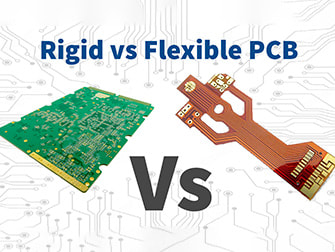A flexible circuit is a patterned arrangement of printed circuitry and components that utilizes flexible based material with or without flexible coverlay.
The basic construction of a flexible circuit includes "Coverlay" or "Cover film". This is a polyester or polyimide film like Kapton ® which is laminated to the top of the base film/substrate. The coverlay has an adhesive backing which creates a permanent bond to the substrate and base material. The coverlay protects the circuitry & components from moisture, dust, dirt, oils etc., it also provides added strength to the component side of the board and protects the component terminations during processing (placement, reflow etc.) The coverlay also serves as an insulation layer between circuits and components.
Adhesive layers between layers of base material can be used to create a 3D effect. Bending/folding along different axis can be achieved by using appropriate adhesive systems. Special adhesives can be used to create a self-adhesive backing on one side which allows you to mount your flex circuit right to the application with no other mounting hardware required. Special surface effects can be added via top side cover coating.
Flexible circuits(Flex PCB) also allow extra-fine lines, as low as 2 mils on 4-mil centers, allowing high-density device population and reduced circuit size and weight.
But flexible circuits have one important advantage over rigid PC boards in that they give designers a third dimension with which to work. Flexible circuits can bend and shape around two or more planes during installation. They can solve space and weight problems by replacing several bulky boards with a single thin one. While in use, flexible circuits can also bend and flex up to 500 million times without a failure. This is something a rigid PC board simply cannot do.










 2022-03-22
2022-03-22
 BEST
BEST


.png)
.png)
.png)
.png)

.png)

